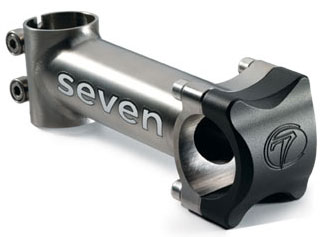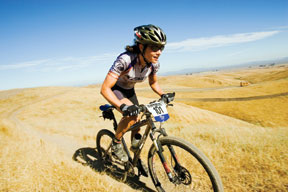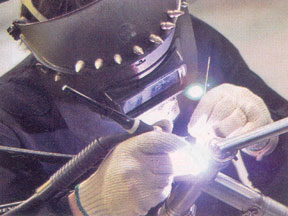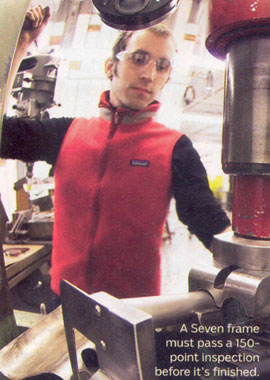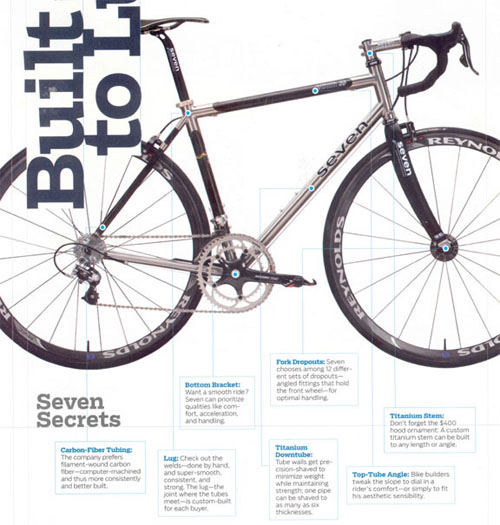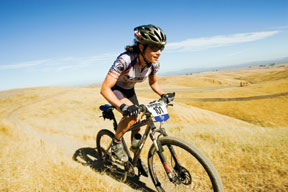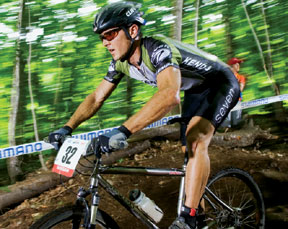Diary Entry from Team Kenda-Seven’s Intrepid Pro Racers, Mary McConneloug and Mike Broderick
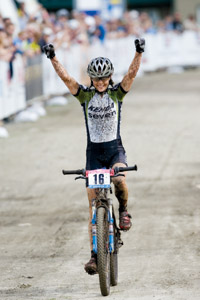
Mary and I made it down to Chile, and as soon as we got off our red-eye flight, jumped in our tiny box van and made our way west through the sign-less maze of Santiago. We felt justified for all the energy and effort we put into setting up this trip. There are a lot of places we could be at this time of year and several places we wanted to be. To make things more confusing, we had been struggling a bit in deciding whether or not we were going to spend our fall racing cyclo-cross, mountain bikes or perhaps take a seasonal break. Once we stopped overanalyzing things and decided to follow our instincts and passion to simply (or not so simply) continue on as traveling mountain bike racers, everything seemed to fall into place.
Something about Chile struck a sweet chord with us and this long skinny country was still on our minds from our initial visit earlier this year. The fact that there was the potential for bettering the USA’s national ranking by competing in Chile’s late season UCI races, and effectively increasing the number of Olympic spots for cross-country mountain biking from 2 to 3 on the men’s side, definitely played a role in our deciding to return. On one hand, our trip could keep the door open for a personal dream to become a reality, but I think that it was as much the excuse that we needed to book the tickets for another epic journey.
Planning a six-week trip anywhere takes some serious effort. In this case, a six-week trip that includes three mountain bike races and a whole lot of training rides takes a lot of foresight, logistical planning and careful equipment selection. It was helpful that the race bags were still half packed from our last trip to World Championships and World Cup finals; but I knew that it was going to be critical to bring absolutely all the necessities and lots of back up gear since, Chile does not have the type of equipment stocked at most of it’s bike shops that can help us keep our race bikes in top form. In the type of town we prefer to travel in Chile, you are likely to come across a killer empanada, beautiful handmade pottery, top notch pisco sour and quite possibly a decent surfboard; however, a spare carbon riser bar and fresh race rubber is something better brought from home.
Mary and I have been getting some long looks as we rip around the dusty back roads searching out training rides through the less traveled sleepy towns in central Chile. For the most part people seem very interested and on occasion seem a bit shocked at the look of the helmet-clad gringos in matching spandex kits; but most seem to harbor little if any animosity as we pass on by. At first Mary was a bit uneasy about the constant whistles of the men, old and young, since she has not spent a lot of time around construction work sites in the U.S. But really it seems to be harmless and is certainly a compliment. We have come to feel as safe here as you can feel when riding your bike on the side of the road anywhere.
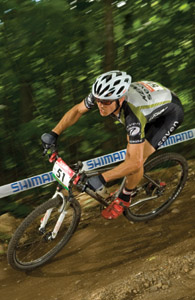
Central Chile is a beautiful and exciting place to ride. From the dry coastal mountains to the eternally snow capped Andes, there are miles and miles of uncrowded winding steep and narrow back roads. We really don’t feel that out of place, since bikes are everywhere. In many towns they are the chief form of transportation and are commonly utilized for everything from vending to construction. Most towns big enough to have a gas pump have a solid bike shop, always busy and in great demand. We have made the point to visit several and there is no doubt that there are some skilled bike mechanics; though their specialties lean more toward welding cracked frames than servicing suspension forks. I have managed to learn a few things with regard to getting by with what you have. I’m sure everyone can appreciate the convenience and light environmental impact of utilizing olive oil for chain lube, not to mention its effectiveness.
Mary’s Spanish-speaking skill has been more than getting us by; the holes in her vocabulary easily being filled with a determination and willingness to hang in there use some hand signs and laugh until the point has gotten across. And this is lucky since I am just getting to the point where I can utter a “hola” without thinking about it first.
We are planning on competing in three races in our six weeks here and we are looking forward to taking our time in between to see, ride, surf and experience all we can. The first race is this weekend and I’m sure it will be an interesting one since it is being held within Chile’s second largest city, Conception. Two weeks later we will compete again outside of Vina del Mar and for the final race of the season we will drive south to beautiful Pucon. This schedule will allow us the opportunity to travel through and stay at some of the sweetest gems that Chile has to offer up for people like us. Our focus will be on the coastal towns that have shown to serve up an endless supply of training options on quiet dirt roads, and on the surfing side, some macking cold water left-hand point breaks.
We are currently staying in the village of Pichilemu, known world-wide in the surfing community for its epic big left point break, Punta Lobos. As far as the surfing we have not been disappointed. And we have been equally happy with the quality of training rides available in the surrounding hills; they remind us so much of the coastal range near Mary’s home in northern California. Not much single track yet, but lots of potential, and in the meantime, plenty of dusty Chilean back roads for training on the mountain bike.
Mary and I lucked into meeting a local gringo surf shop owner named Matt who with his Chilean wife and family has made Pichilemu home for the past 10 years. Matt manages some of the most incredible bungalows in town, within spitting distance of two premier point breaks. (For info email him at: punaniinternational@hotmail.com) He has turned out to be an incredible host, sharing his boards by day and local culinary delights by night. This connection has put us on the right track for how to enjoy this beautiful place and has deepened our love for this area ensuring that we will be returning for more than just to pick up our bike bags pack up and go.
Que te vaya bien!
Mike and Mary
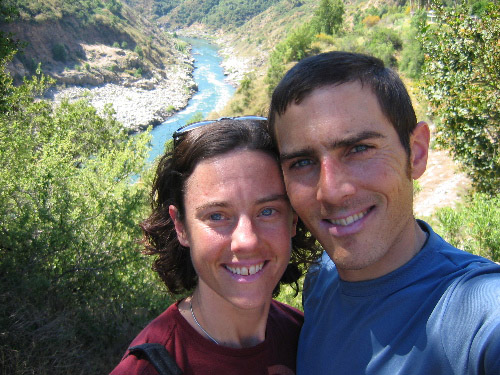
Note: Shortly after receiving this update from Mike and Mary, Chile was struck by a massive earthquake. Fortunately, Mike and Mary were well out of harms way. However, many others were not as fortunately. Seven’s thoughts and prayers go out to those who have suffered from this tragedy.

